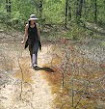Rare Plants of the Endangered
I’m trying to write a book review, but what I keep coming up with is a love letter.
This blog has tried to suss-out a few resources about High Park before, but this new book is the introduction I’ve really been looking for all along.
It’s not just an interesting and easy-to-use interpretive field guide (lots of gorgeous glossy black oak savannah and tall grass prairie plant ID pictures and facts about their habitats, as well as natural history backgrounders), it’s also an inspiring and informative stewardship story too! A story about who and what it took, and still takes, to steward this remnant of globally endangered habitat, including stewardship volunteer teams, a unique public advisory committee, community consultation, an on-site native plants nursery, adopt-a-plot native plant gardens, and local native plant sales which increase the habitat in private yards well beyond park boundaries. All of this in a high-use urban park no less (e.g. sports, cultural events and an increasingly vocal dogs-off-leash community with a self-admitted non-compliance as high as 39% in some on-leash areas: a difficult challenge for any area attempting to conserve a globally endangered landscape, its plants, wildlife and their fragile habitats, such as ground nests). There are also examples and encouraging lesson anyone can apply to restoring and stewarding their natural areas too.
Being a fan of our local environmental stewardship public education resources in and of themselves, I’m thrilled to say that this tight jewel of a book has set a new bar for me when it comes to natural area and stewardship field guides in general.
The format is fresh and inclusive. “We wanted it to be different from many guidebooks,” says High Park Volunteer Stewardship Program Co-Chair Sharon Lovett, “we included volunteer stewards and city restoration staff as part of the habitat. And we wanted to encourage other people to undertake restoration projects of their own as well as learn to appreciate the park’s specific black oak savannah.”
Who might want to buy this book? Local native plant lovers, stewards, citizens of the area, folks creating their own environmental stewardship and natural area public outreach and education pieces, and, of course, anyone visiting
For more reviews and how to buy this book, look here. Also check the Toronto Botanical Garden's bookstore,



No comments:
Post a Comment